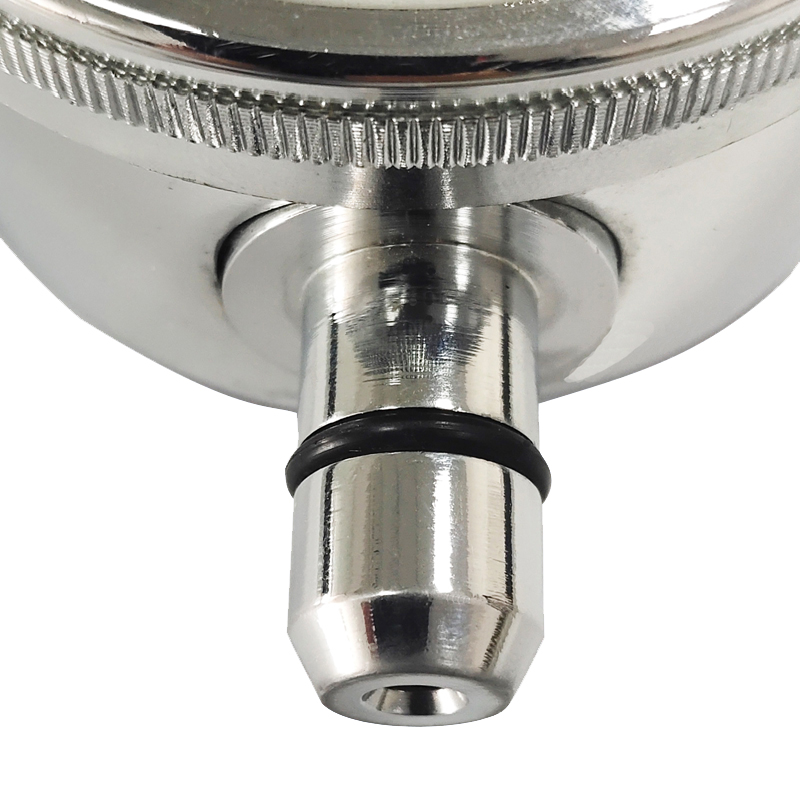
paź . 21, 2024 21:00 Back to list
Five Valve Manifold Differential Pressure Gauge for Enhanced Measurement Accuracy and Reliability
Understanding Differential Pressure Gauges and Their Manifold Systems
In various industrial applications, the measurement of differential pressure is critical for ensuring optimal performance and safety. Differential pressure gauges, equipped with five-valve manifolds, play an essential role in accurately monitoring pressure differences between two points in a system. These instruments are pivotal in sectors such as oil and gas, chemical processing, and water treatment, where precise pressure readings can significantly impact operational efficiency.
What is a Differential Pressure Gauge?
A differential pressure gauge is an instrument that measures the pressure difference between two points in a system. It is widely used to monitor filters, level in tanks, and pressure drops across various components in a system. The primary function of this gauge is to provide readings that help operators determine the condition of a process and make informed decisions to enhance system efficiency and reliability.
The Importance of a Five-Valve Manifold
The integration of a five-valve manifold with a differential pressure gauge enhances its functionality and reliability. A five-valve manifold consists of five distinct valves that control the flow of fluids in and out of the gauge. This setup allows for effective isolation, calibration, and maintenance of the differential pressure measurement system.
The typical configuration includes
1. Two Block Valves These valves isolate the differential pressure gauge from the process lines, allowing for maintenance without interrupting the system's operations. 2. Two Equalizing Valves These facilitate the equalization of pressure on both sides of the gauge. This is crucial during maintenance, as it prevents damage to the gauge and ensures accurate readings. 3. One Vent Valve This valve allows for the safe venting of pressure from the gauge, ensuring that it can be depressurized without risk of injury or equipment damage.
differential pressure gauge with 5 valve manifold factory

The well-designed five-valve manifold provides operational flexibility, making it easier for technicians to manage the gauge and conduct regular maintenance checks with minimal downtime.
Applications of Differential Pressure Gauges with Five-Valve Manifolds
In practical applications, differential pressure gauges with five-valve manifolds serve various critical functions
1. Filter Monitoring In filtration systems, monitoring the pressure drop across a filter element is vital for determining when the filter needs cleaning or replacement. A differential pressure gauge provides this information, helping prevent system clogging and inefficiency.
2. Level Measurement In tanks, the differential pressure gauge can measure the level of liquid by assessing the pressure difference between the top and bottom of the tank. This measurement is crucial for inventory management and process control.
3. Safety and Alarms Many processes are sensitive to pressure variations. A differential pressure gauge can trigger alarms or automatic shutdowns if pressure differentials exceed safe limits, enhancing overall system safety.
Conclusion
In conclusion, differential pressure gauges equipped with five-valve manifolds are indispensable tools in various industries. Their ability to provide accurate measurements while allowing for safe maintenance and operation is critical in maintaining the efficiency and safety of numerous processes. As industries continue to prioritize automation and precision, the significance of these gauges will only grow, solidifying their place as vital components in modern industrial applications. For those considering implementation or upgrades in their systems, investing in high-quality differential pressure gauges and manifolds is certainly a step in the right direction.
-
High-Precision 5 Valve Manifold Differential Pressure Gauge Suppliers
NewsApr.29,2025
-
High-Precision Diaphragm Vacuum Pressure Gauges Manufacturers & Quotes
NewsApr.29,2025
-
Omega Differential Pressure Gauges High Accuracy & Durability
NewsApr.28,2025
-
Low Pressure Differential Pressure Gauges Precision Solutions & Quotes
NewsApr.28,2025
-
Digital Diaphragm Pressure Gaauge Precision Measurement & OEM Quotes
NewsApr.28,2025
-
Differential Pressure Gauge China Price High-Accuracy & Best Quotes
NewsApr.28,2025
